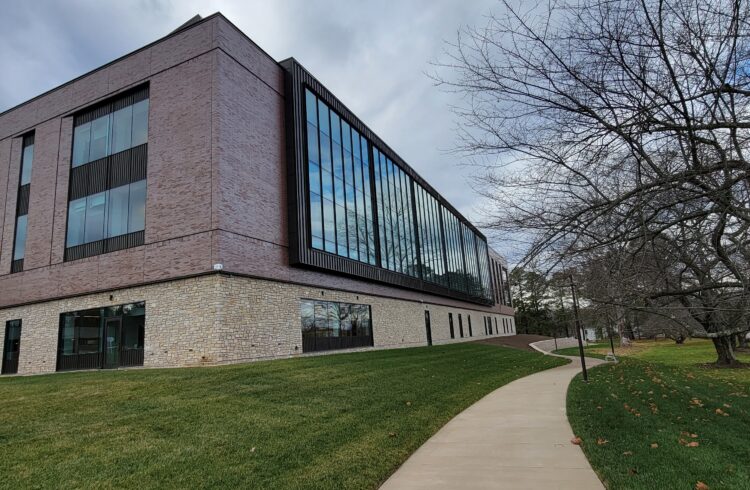
Most Americans have never heard of magnetic resonance guided focused ultrasound (MRgFUS), yet it is a technology that promises to revolutionize medical care around the world.
“We’re at the same point with focused ultrasound as we were with diagnostic MRIs several decades ago,” says Neal F. Kassell, M.D., a professor of neurosurgery at the University of Virginia’s School of Medicine and an internationally-known proponent of focused ultrasound research and development. “Back in the 80’s, no one knew about MRI. Today, just about everyone has either had one or knows someone who has had an MRI. That’s how commonplace it is.”
Kassell believes that MRgFUS – the technological marriage of magnetic resonance imaging and focused ultrasound – may be the most important therapeutic development since the scalpel. That notion will soon be explored by dozens of his colleagues from nine specialties who will engage in a robust program of research projects and clinical trials at UVA’s new Focused Ultrasound Center, which was dedicated on September 14.
Specialists performing research at the UVA center will represent a wide range of disciplines, including anesthesiology, biomedical engineering, gynecology, neurology, neurosurgery, oncology, radiology, radiation oncology surgery and urology. Within coming months, their research will focus on using MRgFUS to treat brain, breast, prostate, bone and liver tumors and conditions such as epilepsy, stroke, chronic pain, Parkinson’s disease and essential tremor.
During MRgFUS treatments, which are noninvasive and performed on an outpatient basis, patients lie on a table while doctors use the visual capabilities of magnetic resonance imaging to direct hundreds of individual and normally harmless sound waves at a single treatment point deep inside the body.
“When they intersect, ultrasound waves have enough energy to destroy tumor cells, much like sun beams can be focused with a magnifying glass to burn a hole through a piece of paper,” explains Alan H. Matsumoto, M.D. “The technology is so precise that it can treat sites as small as a millimeter, which is about half the size of a grain of rice.”
In addition to conducting research, Matsumoto, who is chairman of UVA’s Department of Radiology and co-director of the new center, will provide focused ultrasound treatments to patients with uterine fibroids. “This is the first focused ultrasound treatment approved by the FDA, and it will be an important addition to the range of therapies we offer to patients with uterine fibroids,” he says.
Treatments, which will become available in late October, will take about three hours. Side effects, if any, are typically minimal – minor cramping is most common – and patients can expect to feel well enough to resume daily activities almost immediately.
Looking ahead, James M. Larner, M.D., director of UVA’s Focused Ultrasound Center and chairman of the Department of Radiation Oncology, says a case by case approach will be taken to prove the safety and efficacy of the new technology for treating other conditions. “I’m cautious by nature,” he says, “but have to admit I’m really excited about the possibilities of focused ultrasound and the benefits it may offer our patients.”
As a radiation oncologist, Larner is impressed by focused ultrasound’s ability to destroy 100 percent of cancer cells. “Chemotherapy kills a certain percentage of malignant cells, but not all of them,” he notes.
Three other aspects of MRgFUS intrigue Larner. First, its imaging capabilities let clinicians watch as ultrasound heat destroys cells. “This can give us a new level of certainty about how well our treatments work,” he says.
Second, cancer cells cannot become resistant to focused ultrasound. By contrast, cell resistance ultimately limits the effectiveness of all chemotherapies.
Finally, focused ultrasound has a rapid dosing drop off, meaning the technology concentrates high levels of heat on a target site but does not spill over to nearby healthy tissue, potentially causing damage or patient complications.
UVA’s new center, which is one of 90 focused ultrasound sites around the world, is the first to use its MRgFUS equipment exclusively to perform research and treatments. The facility is also the first to be designated as a center of excellence by the Focused Ultrasound Surgery Foundation, a nonprofit organization set up by Kassell to speed the development of new treatments.
“Every day that this technology is not widely available means people are suffering and dying needlessly,” Kassell says. “That’s what makes it such an urgent matter.”
As Kassell notes, bricks and mortar are not as important as the brains at UVA’s new center. “We are fortunate to have some of today’s smartest and most talented people participating in our multi-disciplinary research program,” he explains. “They have what it takes to lead the way in this emerging field of medicine.”
More information about UVA’s Focused Ultrasound Center can be obtained by emailing FUSbrain@virginia.edu .


